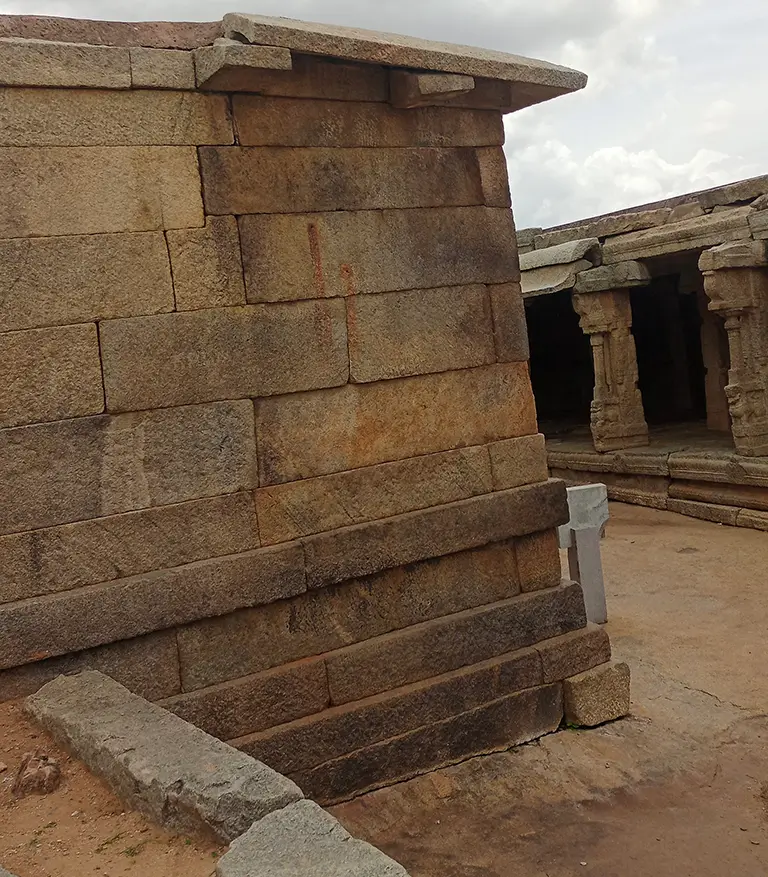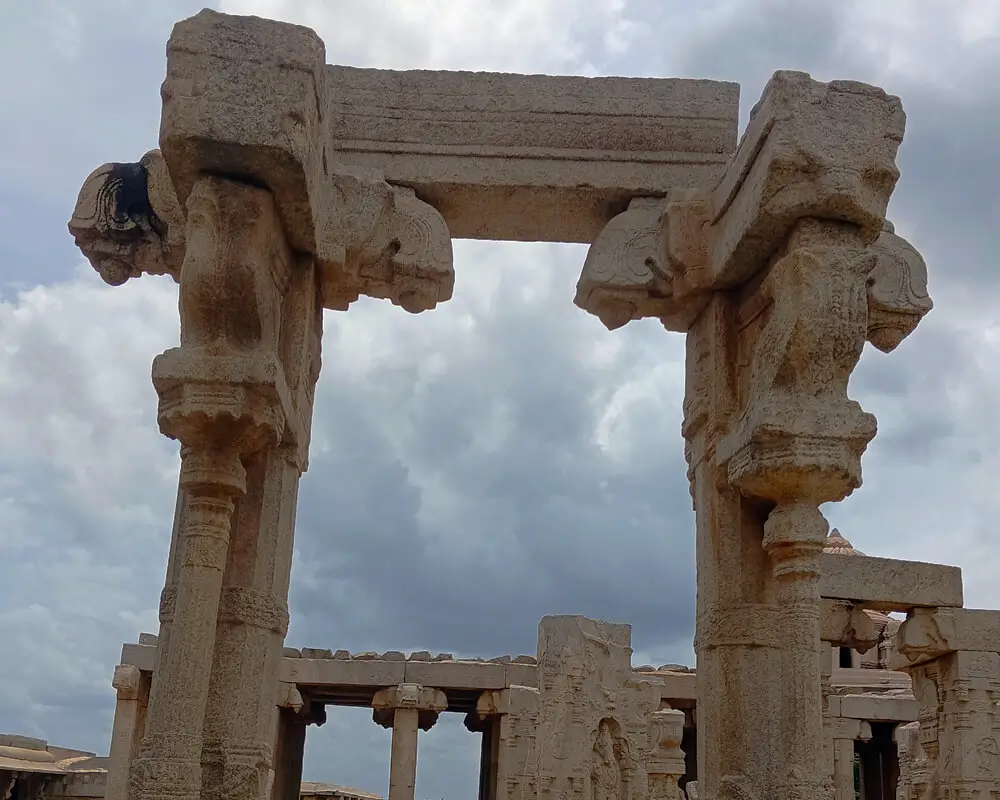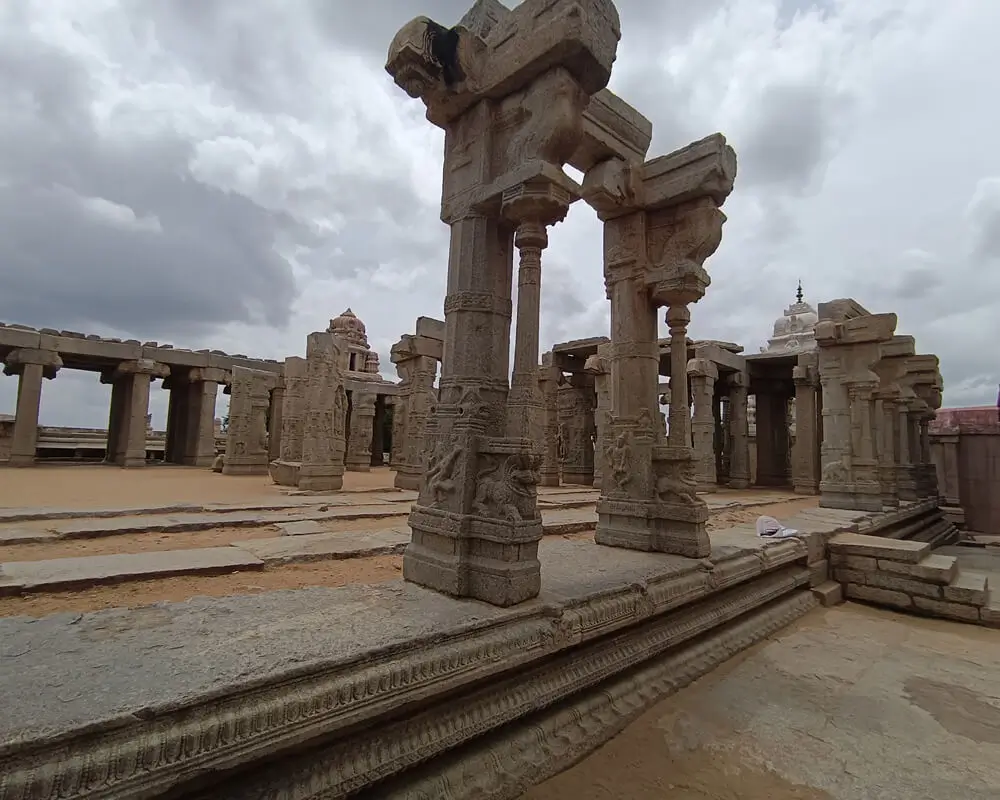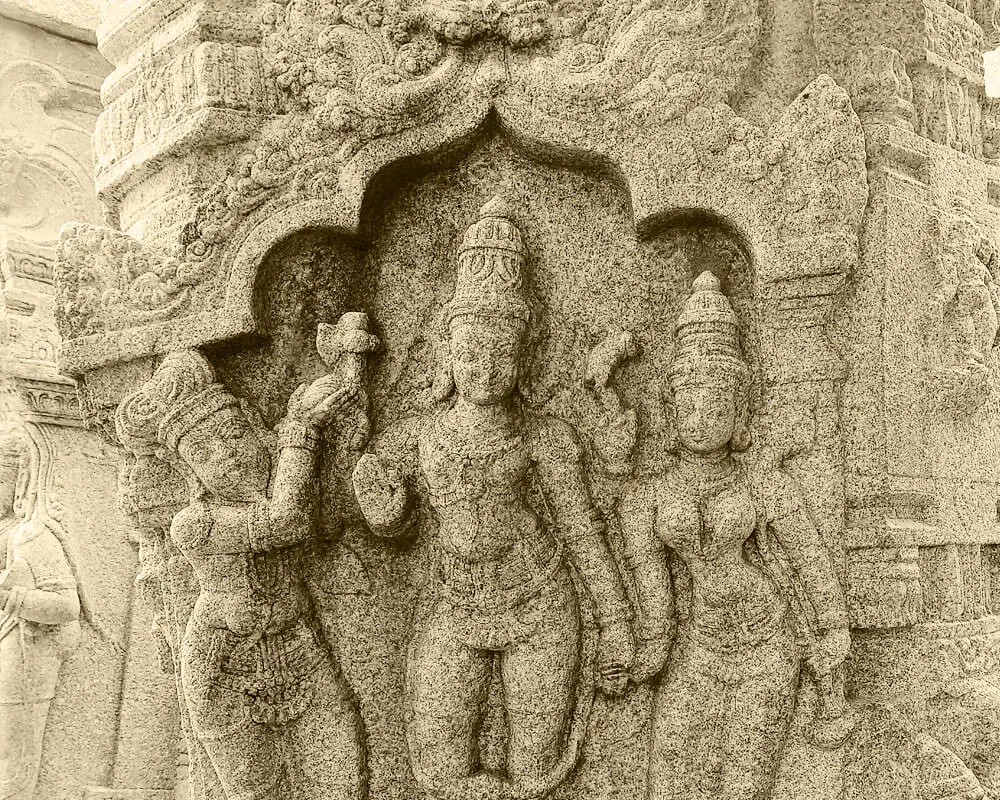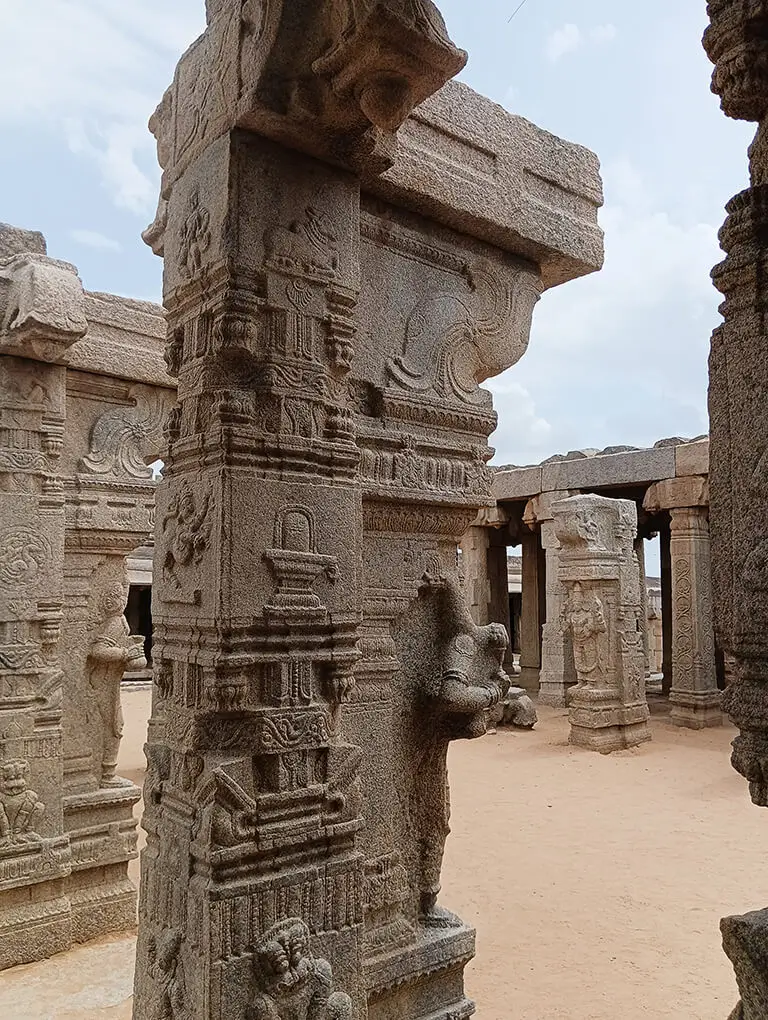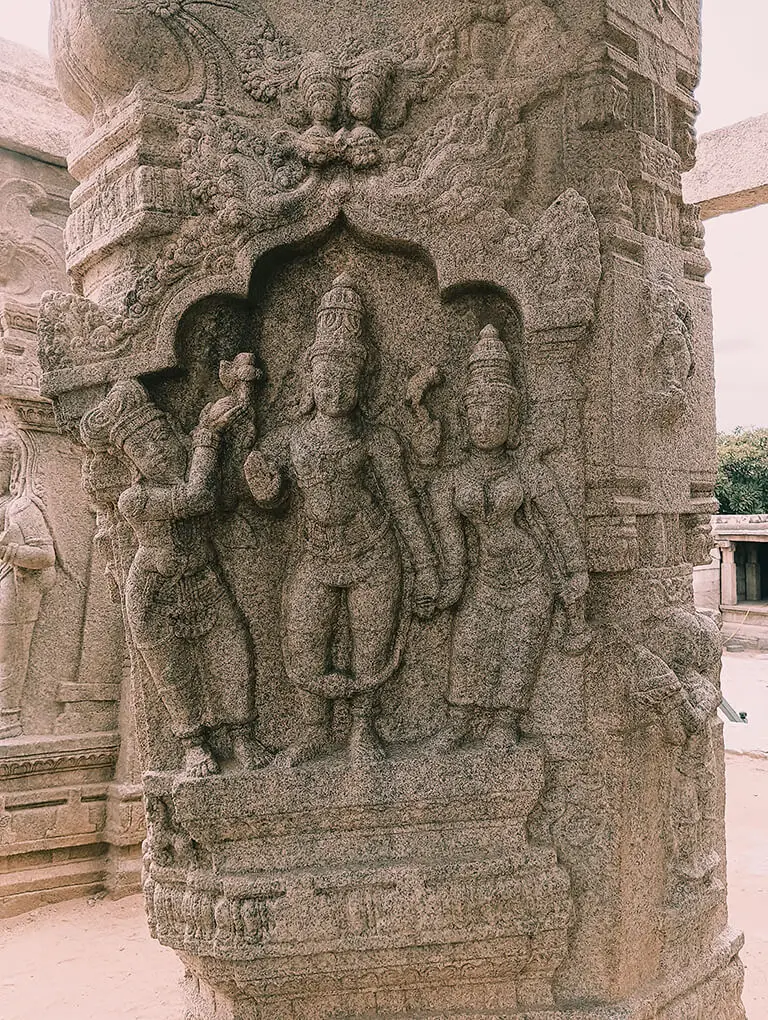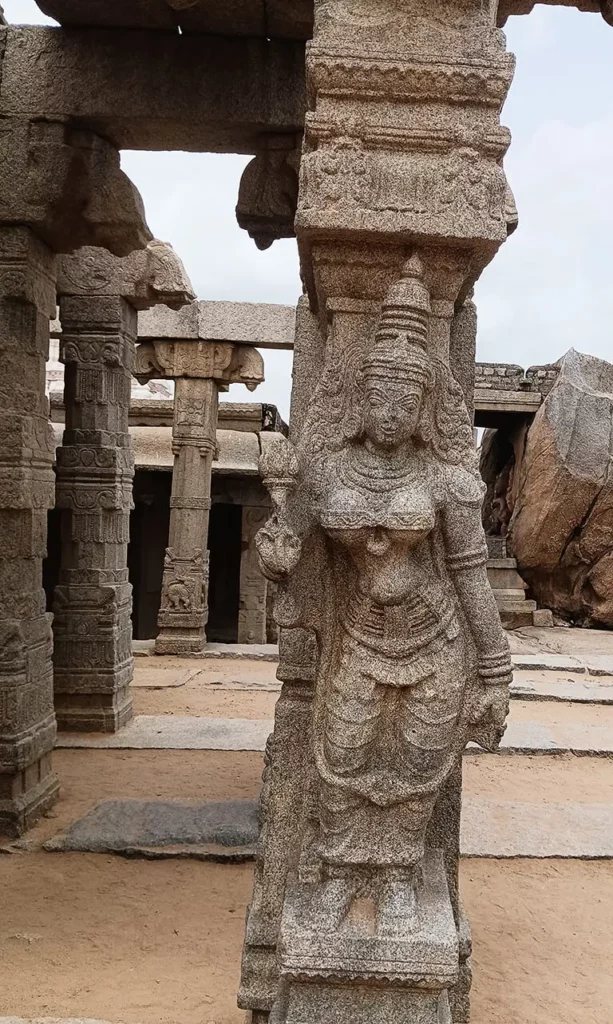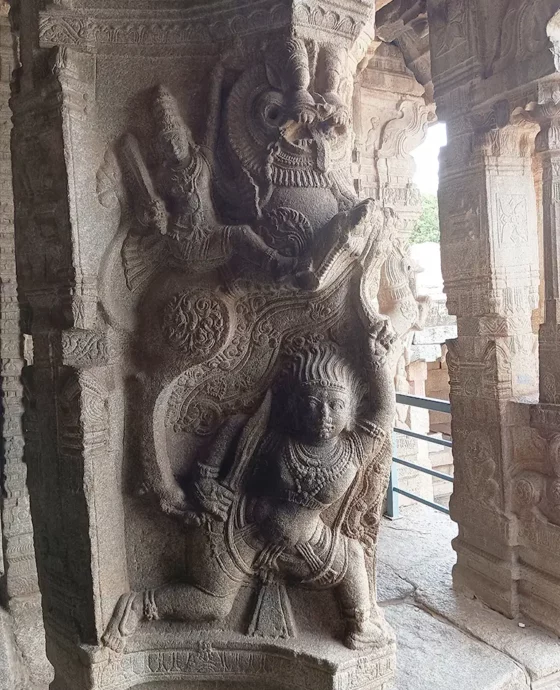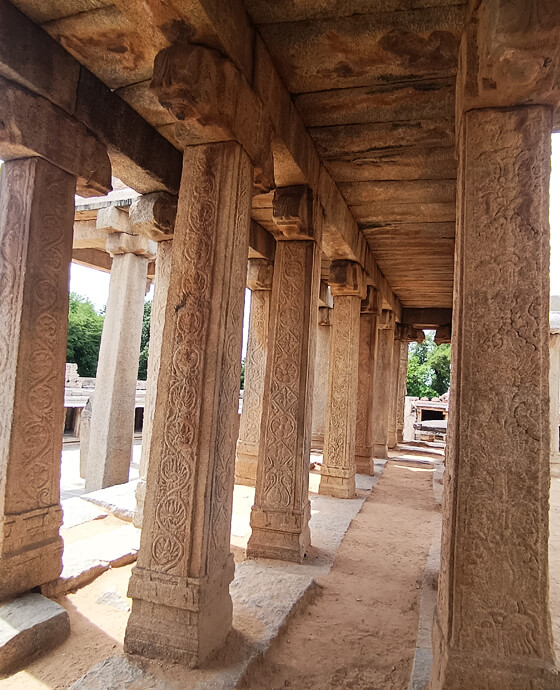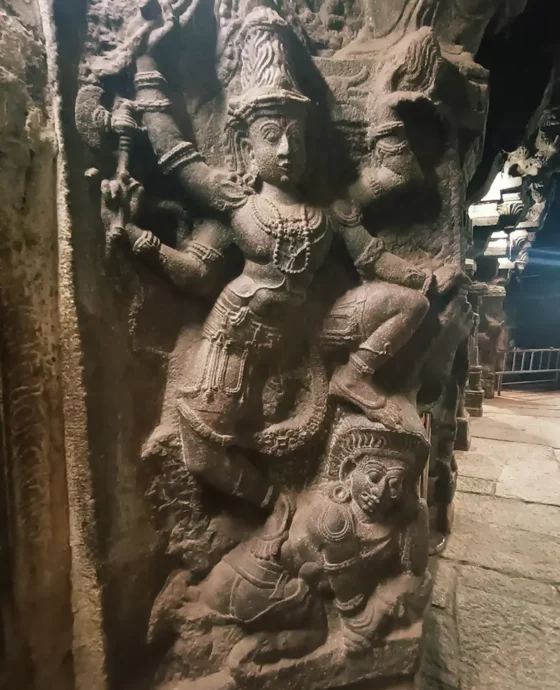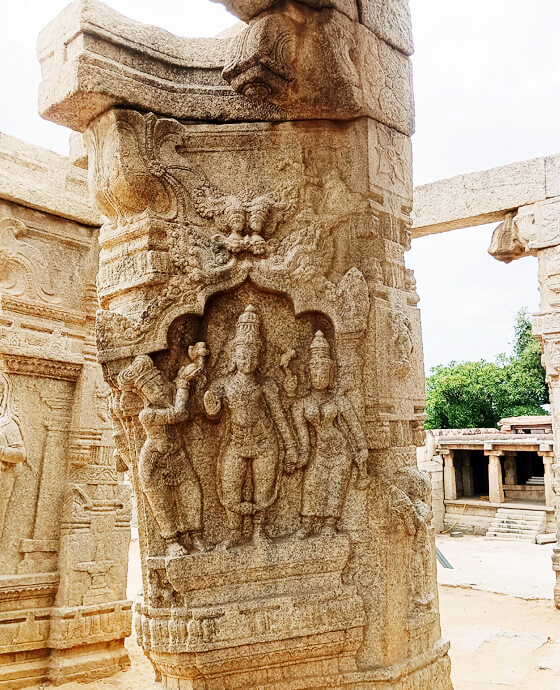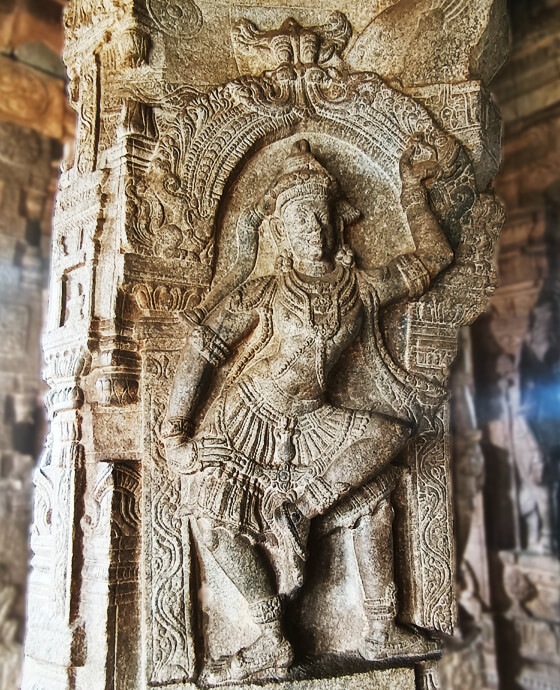Unfinished Kalyana Mandapa
Marvelous Kalyana Mandapa
The Kalyana Mandapa, nestled in the tranquil southwest corner of the inner enclosure at Lepakshi Temple, beckons you to explore its intriguing history and artistic marvels. This open-air structure stands tall upon a raised base, reaching a height of five and a half feet along its northern side. As you step inside, you’ll be greeted by an astonishing array of thirty-eight pillars, each with its unique story to tell.
Discover the Enigmatic Kalyana Mandapa at Lepakshi Temple
These pillars come in three distinct varieties: some feature a single pillaret projecting elegantly, while others boast two pillarets projecting gracefully. The most captivating are the pillars adorned with substantial deity images carved onto projections of the shaft, each bearing witness to the divine union of Lord Shiva and Devi Parvati. These intricate carvings depict numerous sages, celestial beings, including Dhanvantari and the eight Dikpalakas, all gracing the pillars as esteemed guests to the divine nuptials.
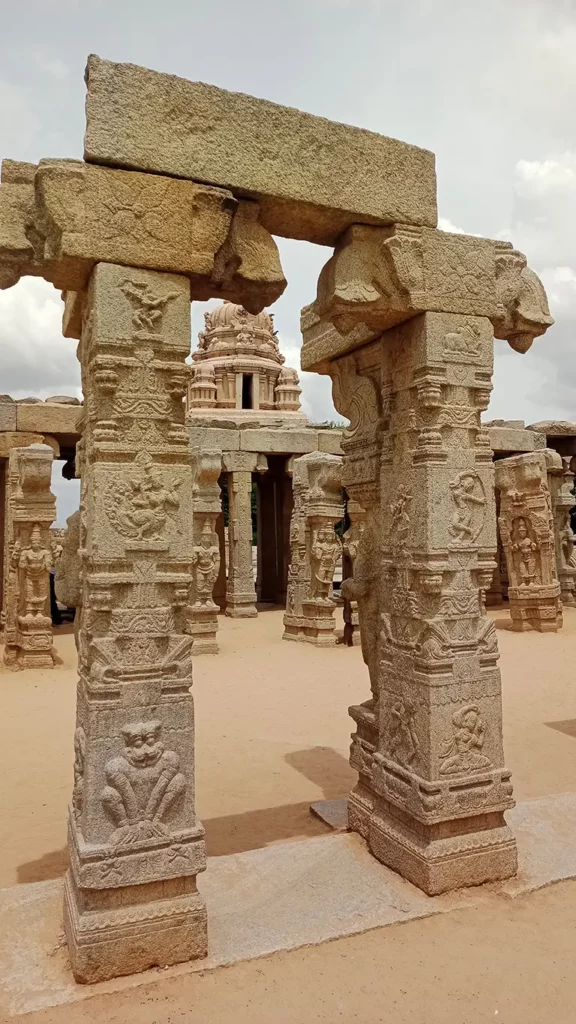
However, what makes the Kalyana Mandapa particularly fascinating is its unfinished state, shrouded in a poignant tale from the annals of history. It is said that this grand pavilion was commissioned to commemorate the celestial marriage of Lord Shiva and Devi Parvati. Yet, during its construction, a grave accusation was levied against the royal treasurer, who was accused of misappropriating funds from the treasury without the King’s consent. In the King’s fury, he ordered Virupanna, the officer in charge of the state treasury, to be blinded as punishment.
Unable to bear the weight of this false accusation, Virupanna resorted to a heart-wrenching act of self-mutilation. In an act of profound devotion and despair, he blinded himself and cast his own eyes onto the wall. Remarkably, two enduring red spots still adorn a wall near the Kalyana Mandapa, believed to be the poignant imprints left by his bleeding eyes. This act of sacrifice rendered the mandapa perpetually incomplete, a silent testimony to his unwavering commitment.
A marriage celebration of celestial proportions naturally requires the presence of divine witnesses. Consequently, the Kalyana Mandapa is adorned with magnificent sculptures of various gods and goddesses, all assembled to bestow their blessings upon the divine couple. These intricate depictions pay homage to the sacred union of Lord Shiva and Devi Parvati, ensuring that their celestial marriage remains eternally blessed.
As you stand within the hallowed precincts of the Kalyana Mandapa, take a moment to reflect upon the profound history and artistry that grace this unfinished marvel—a testament to human devotion, sacrifice, and the enduring spirit of Lepakshi Temple.
The name “Lepakshi,” curiously, translates to “One with painted eyes,” perhaps in homage to this poignant incident.
